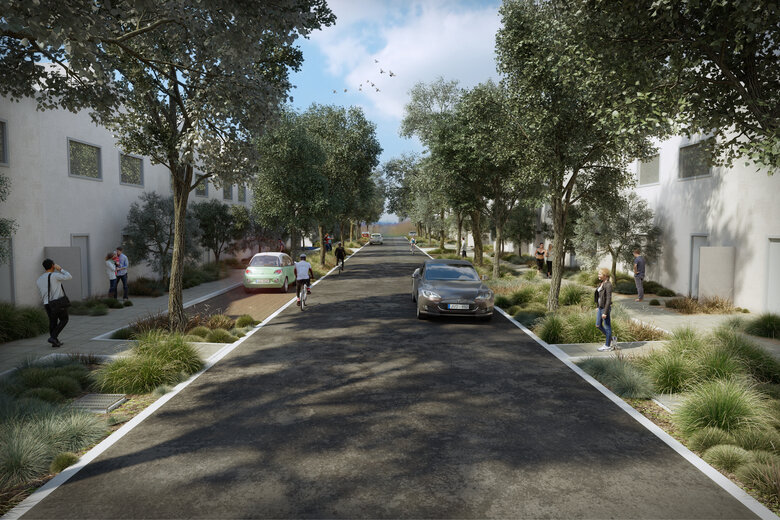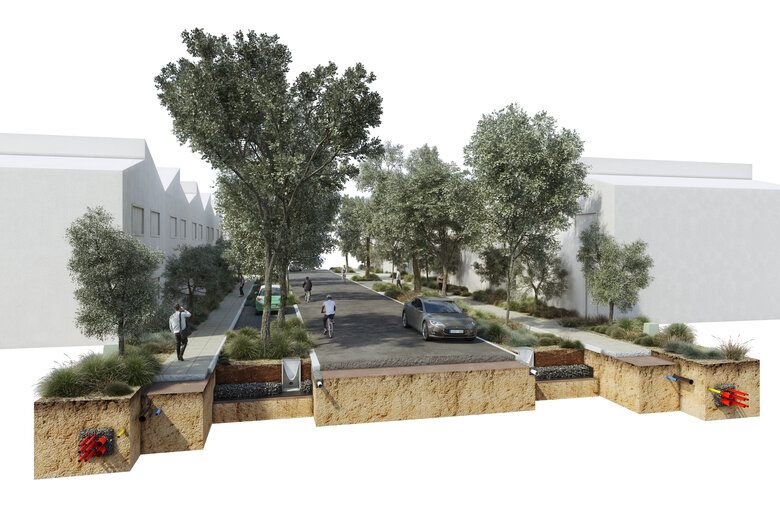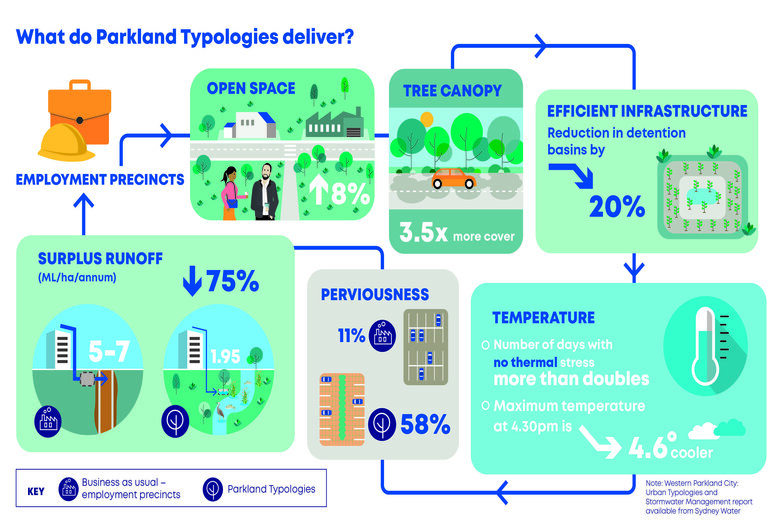
Sydney Water has developed a ‘greenprint’ for a major urban project in Western Sydney that’s being described as the first Australian development to be planned around future climate challenges.

The Urban Typologies and Stormwater Management Project will be realised in the Wianamatta South Creek corridor, which is designated as the ‘cool, green spine’ of the Western Parkland City in the planned Western Sydney Aerotropolis.
The project is based on the integration of land use planning and water cycle management.
Sydney Water Waterways Manager Phil Birtles says the plan was driven by the need to reduce the impact of stormwater flow on South Creek, but it also represents a wholistic approach to water servicing which aims to achieve benefits around health and liveability in the area.
“Our case shows how to end up with more liveable areas, how to protect green corridors and minimise the need to import drinking and export waste water,” he told Government News.
“From Sydney Water’s perspective it’s a step into the planning space, from the water industry into the planning and urban design space.”
The Western Parkland City: Urban Typologies and Stormwater Solutions report, produced by Sydney Water in partnership with architecture firm Architectus and engineering consultants Bligh Tanner, says the state government’s aspirations for a ‘cool and green’ western Sydney will require a change in planning and design practice.

The approach outlined in the report focuses on catchment management and reducing the urban heat island effect through more effective design. It includes elements including increased canopy cover, irrigated vegetation and planning controls around water resistant surfaces.
Reducing the heat island effect
The report says it’s possible to reduce temperatures by up to 4.6 degrees through streetscape design and stormwater capture, and cut the number of heat stress days per summer from 47 to 19.
Architectus project leader Oscar Stanish says it’s the first time an Australian city is being designed in response to future climate challenges.
“It absolutely represents the future of urban planning,” he told Government News.
“We’re getting more sophisticated in the way that we look at planning because future climate considerations are becoming more and more important, and our resource usage and water usage impact on Sydney is becoming ever greater.”
Bligh Tanner project lead Alan Hoban says the plan makes it easy for local governments and developers to get it right.
“What this work does is … show people how the streets work, how the housing works in a high, low and medium density scale, we show them how industrial and commercial areas work,” he told Government News.
Mr Hoban says the millenials who will populate western Sydney in the comming years will bring with them a value shift around both housing expectations and climate change.
“It sets up a ripe market for doing urban development differently,” he says.

Comment below to have your say on this story.
If you have a news story or tip-off, get in touch at editorial@governmentnews.com.au.
Sign up to the Government News newsletter
2 thoughts on “Sydney Water’s ‘greenprint’ for Western Sydney”
Leave a comment:
Most read
Scathing report finds little has changed at PwC
Qld council welcomes progress on massive battery system
Inquiry to consider how federal govt can address councils’ sustainability issues
‘Local’ procurement turns out not to be so local, committee hears
Another report finds local government falling down on cyber security
This looks a very sterile and unfriendly community at least now government appear to have realised that there has already been a huge increase in tempertures in Western Sydney, but the precautionary principle for the Greater Macarthur Growth Area and Cumberland Plain Conservation Plan for the Campbelltown Macarthur region in regard to increasing heat and cumulative effect of air pollution of the new airport Cleanaway recycling plant, Intermodal and thousands of homes, vehicles etc has been ignored. With tempertures of around 50 degrees last summer which was almost 2 degrees higher than the year before and the expected rise of 2 or 3 degrees for climate change plus an additional 2 or 3 degrees as grassland and bushland is destroyed it will bring tempertures in Campbelltown to approx 55 or 56 degrees. Last summer demountable classrooms could not cope with 50 degrees how on earth does this government expect residents, native animals or bushland to survive. The average temperture ofa koala is 35 to 36, a human 36 to 37 degrees. Government has stted all lots created must have
an 8 metre tree in the backyard and a smaller tree in the front of the house but with lots being between 250 and 350 squares trees will interfere with buildings and pipework which does suggest that the Department of Planning are clutching at straws.
Campbelltown City Council were and still are very concerned about the rising heat in our region and to this end I would aporeciate it if you would read and take note of the report Benchmarking heat across Campbelltown which is avaikable on line
This is all very well and commendable for new suburbs, which have probably required land clearing and biodiversity loss, for development. Should we be locating people in the western Sydney basin where temperature extremes are becoming uninhabitable? What retrofitting is planned for existing areas where conditions require constant air conditioning, further amplifying the heat? Trees are wonderful and the Olympic Village at Homebush is a good example of a leafy and well designed suburb, much closer to the Parramatta River/ harbour water body and benefitting from sea breezes (although weak). But this is a long way from the western Sydney basin heat sink. Is provision being made for watering trees as well as for human consumption?